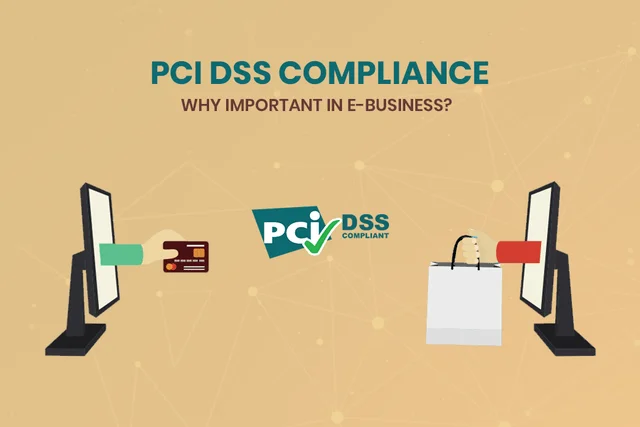Almost every e-commerce store accepts payments using credit cards. So, it becomes crucial to ensure the presence of PCI (Payment Card Industry) Data Security Standards. These standards cover a well-defined set of rules and regulations ensuring a secure transaction for credit card payments. All the e-commerce stores complying with PCI adopt certain measures which aim at securing all the data related to the customer using safeguarded networks, applying control on accessibility, backing up intramural policies for compliance and security purposes, and restricting susceptibility.
What do you understand by PCI Compliance?
Among the PCI DSS, certain practices adopted include using encryption practices, application of a firewall, limiting information related to the cardholder, securing with safe passwords, and so on. A council for PCI DSS is formed which is recognized as a universal consortium. This council came into the foundation by several companies (in the credit card sector) such as American Express, MasterCard, Visa, and so on.
PCI compliance is a mandatory thing that every e-commerce site operator should maintain. It is not solely ordered based on transaction volume or storage, organizing, and transmission. It is an application for the businesses which involve in payments using a credit card. There is a reduction in the rate of attack due to the application of PCI. In the context of an e-commerce site, it signals towards the environment created for card data or the administration of data relates to credit cards on the website.
Most often, e-commerce websites come in contact with the services rendered by third-party such as PayPal, Stripe, or others. In this case, it is mandatory to obey all the PCI DSS requirements. These requirements should not even be avoided by the merchants operating on a small-scale. The thieves of data are ready to attack the e-commerce websites which are not protected by PCI Compliance standards. If data thieves are successful in stealing customer information or card data from any e-commerce site, then the operator is liable to suffer from huge fines, penalties, or even stand in a situation to lose access to payments using credit cards.
Is it important for an e-commerce site to maintain PCI Compliance?
When operating an online business, customers rely on trust as it is a key element while buying from online stores. If any incident occurs related to breach of security, it can ruin the reputation, revenue, and traffic of the online store. These days people are shifting towards online shopping largely. And the cybercriminals target e-commerce sites to steal customer credit card data or other information.
As a merchant, how big online store are you operating? Hackers can locate your website easily with the application of robotic scripts, inspect the weakness, use your server, and obtain unlicensed access to it. Moreover, there is no exemption for the small-scale e-commerce stores as cybercriminals don’t miss any opportunity to access any website and steal cardholder data. Most often, it becomes an easy job for hackers to gain unofficial access to small-scale websites as compared to the large one.
Every e-commerce website, whether big or small is receptive of several security threats and issues:
1. Search engines and browsers block hacked websites.
2. The credit card hackers choose customers and put them at the possibility of theft
or fraud occurrence related to identity or credit card.
3. The website content which is being injected by the criminals can be a major cause
behind spreading malvertising or malware.
4. With hijacking, there is a decrease in sales since customers get redirected to a
shopping cart created by the criminals which shows all the fake details.
Since the risk is always present to some extent, it is obligatory to ensure security
continuously at every stage. To maintain a fully-secured e-commerce website, it is
necessary to adopt frequent analysis and gauging.
PCI Compliant: What are the necessary measures to adopt?
There is no legal requirement for an e-commerce website to adopt PCI Compliance. It’s just a good thing for an online store to maintain protection against all the spam or malware sources. The online stores should maintain proper compliance with PCI standards in the following areas:
.Keep the network protected: In this step, it is crucial to pay attention to the parameters ensuring complete network security such as Firewalls and other custom options. Also, it is crucial to ensure regular testing and tracking on the web network.
.Codified control on accessibility: In this area, it is crucial to limit the accessibility control related to customer data and other relevant information. This can be overcome by implementing a strong and secure system with an ID/Password login for protecting employee’s accounts. Also, keep a regular monitor on the accessibility criteria for the stored information.
.Ensure safety over cardholder data: If you’re operating an online business and your website keeps storage of cardholder information, you should perform or take every step to ensure the safety. In this regard, you can keep the transmission data encrypted and avoid storing sensitive card data (such as CVV and others).
.Mention every detail in the security terms and policies: Employees should be guided with a comprehensive list of steps. Also, the accessibility criteria for sensitive data should be fully-secured.
.Secure with the potential susceptibility: This can be ensured by the application of programs such as anti-virus and others. Also, the internal applications should be developed with a fully-secured network.
Can my e-commerce store get certified under PCI Compliance?
No doubt, an e-commerce website can easily attain PCI Compliance certification. You should know the ways to get the certification done. To learn more, continue reading the article.
For the certification, you need to fill-up the documents as required, which are compliant with the guidelines present under PCI Standards. When classifying your business, rely on the questionnaire framed for self-assessment criteria. It is important to select the right questionnaire and after that, you’ll interact with a set of questions that help you compare your website’s actual performance with the standard regulations.
Once the questionnaire section is finished, you’ll be headed to the compliance attestation document. Once you’ve filled the attestation, it makes a confirmation that all the measures have been adopted by the merchant which complies with the PCI regulations.
How to make an e-commerce store PCI compliance?
Most often, there are certain issues related to security which every e-commerce operator should be aware of. With this information, it is also crucial to learn several ways to overcome these security issues.
Sometimes, the merchants of e-commerce stores feel worried when it is about maintaining a completely secure database related to the cardholder. Keeping this thing in mind, PCI SSC (Payment Card Industry Security Standard Council) came up with an announcement regarding the guidelines to operate online stores. These guidelines relate to the rules and regulations which are mandatory for e-commerce stores to maintain secure transaction related to credit card payments.
Based on these guidelines, an e-commerce website operator should adopt some tips mentioned below to make the website PCI Compliant:
1. Consider security elements about the payment transaction
When it is about accepting or making a payment transaction, there exist several options in e-commerce stores. Check out some examples along with the attached needs to ensure proper security:
.Payment form via merchant-hosted network: This case relates to the payment form and a page hosted by the merchant website. There exists a website server on which all the details of the cardholder get processed before releasing it to the PSP (Payment Solution Provider). Since all the cardholder data is handled and monitored by the merchant, there is a scope in the controls related to PCI Compliance applicable to the system provided by the merchant.
.Redirect URI model: This model is generally adopted by small or medium-scale online store operators who don’t have any concern regarding the addition or customization of the latest attributes ensuring a good payment experience among customers. During the payment transaction, the customer gets redirected from the website to another page (or third-party) where he or she enters the data on the page for payment (hosted by third-party). During this transaction, the merchant server doesn’t get interacted with the cardholder data. As a result, it demands fewer controls over security.
.Separate payment page or iFrame: Under this case, there is a separate page related to payment transaction which is fully-secured from the cybercriminals’ attack. This page is shown within the webpage hosted by the merchant. The controls related to monitoring or alerting raise security.
.JavaScript solutions or form: All the solutions which are based on JavaScript apply it to check the data (related to payment) and ensure it gets submitted securely to the PSP without the involvement of any other network.
2. Keep the TLS/SSL Certificate updated
You need to choose the latest Transport Layer Security (TLS) certificate. If you’re relying on an outdated SSL version, it can give an invitation to several security threats. The latest version ensures compliance with helpful vulnerabilities. Under the PCI DSS 3.2 regulations, it is required for all online businesses to eliminate the usage of any SSL version along with the avoidance of past TLS versions.
3. Encryption is always a savior
Most often, the security threats occur when a merchant website sends the cardholder data to the payment page. So, it is crucial to know how and where all the cardholder data is being sent. For security purposes, encryption is always a savior.
Under the PCI DSS 4.1 Guidelines, it is important to ensure proper encryption over cardholder information when it is being sent on an open network. Also, it is crucial to use and rely only on the latest standards applicable to TLS. Or if there is a need to maintain the storage of cardholder information due to some legal formalities, it is mentioned under PCI DSS 3 Guidelines that the information should remain encrypted with tokenization.
4. Properly secured review code
Most often, attackers get a clear way to gain unauthorized access when the sensitive data is linked with the routes consisting of low-rated code. With the existence of problems in coding, it can open the way to several vulnerabilities. This ultimately gives power to hackers to apply cross-site scripting. This term is used to describe a strategy used by hackers to apply malicious techniques and set a pernicious code over the websites showing vulnerabilities. The hackers do it with the main aim to use sensitive data such as credit card CVV or passwords.
For the code review step, you should adopt certain measures concerning the objective parties. Any code which is used in the payment transaction or card-related environment should be reviewed properly. Moreover, if you’re willing to introduce or launch a new product or website, then ensure the application of a penetration test.
5. Control accessibility criteria for employees
Only those employees should be provided with the access control for cardholder information who have a direct role or job for it. Though, even if the access to cardholder information is not given to any employees, their device should maintain proper storage related to passwords, usernames, and other relevant details which a hacker would find useful. It can even be single employees who fortuitously destroy your system by using malware.
PCI SSC guidelines not only cover the rules and regulations to help and ensure the merchant website’s safety. It is also aimed at making them aware of the cybersecurity terms and relevant principles. Cybersecurity is linked with the creation of a safe environment for online payment transactions on every e-commerce website.
6. Train employees about protocol
Either monthly or quarterly, give proper training to employees about the protocol related to download, password, attachment, and so on. Let the employees interact with the security measures adopted by your company. For e-commerce store security, it is crucial to take every step or measure, ensuring full-security over the cardholder information. Keep in mind that you’re not only saving your customer’s data; you’re also ensuring your business’s reputation is maintained.



 India
India
 United Kingdom
United Kingdom







